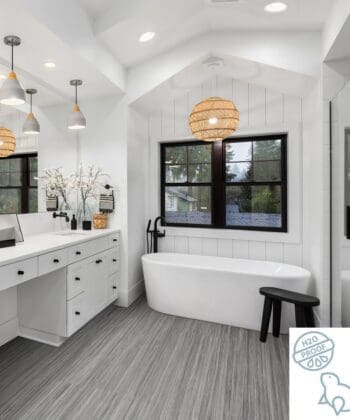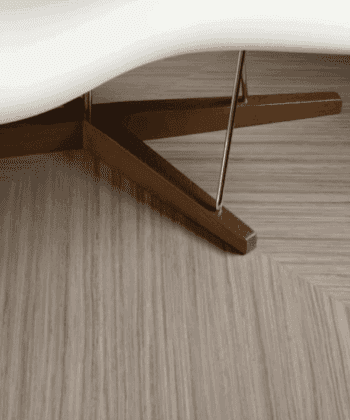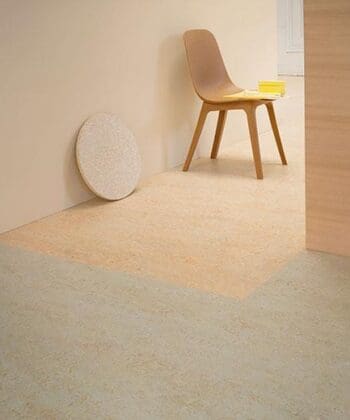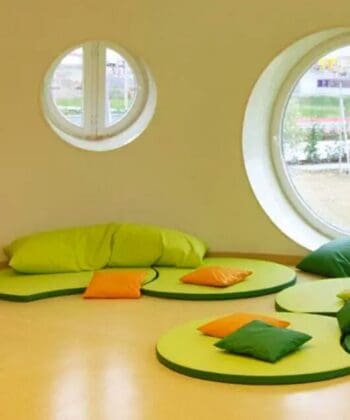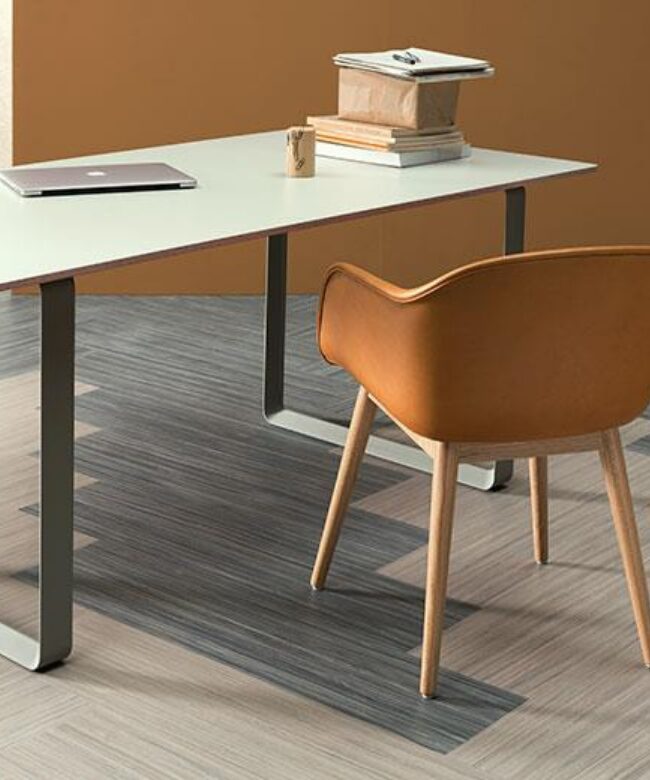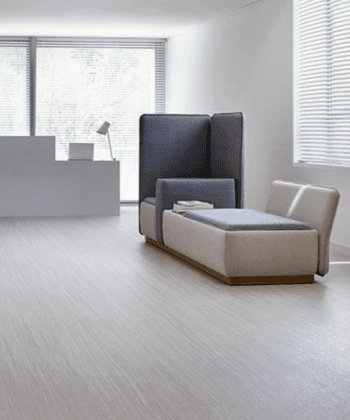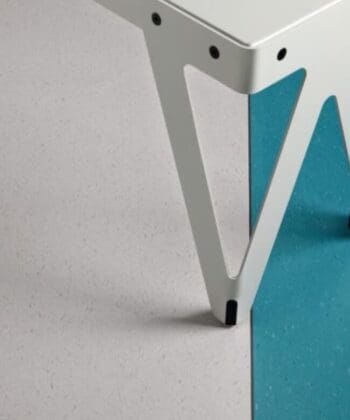Podcast
NTE Podcast: The Hidden Menace
NTE Podcast: The Hidden Menace
NTE Podcast: The Hidden Menace. Inside of every home, there are obvious dangers and toxins that we can address, but what about those that aren’t so obvious. Jay and I call those the hidden menaces in our homes and today, we tackle some of those. As the saying goes, “life is a journey”. Well, living in a healthy home is a journey and one which has a different destination for everyone. We are not in pursuit of perfection, folks. We are in pursuit of tolerance, comfort and a space healthy enough to allow us to heal.
iTunes
Google Play
Spotify
Transcript
NTE Podcast: The Hidden Menace
Andy Pace: This is Non Toxic Environments, episode 3.04. We’re talking about the hidden menaces today, hidden menaces inside of the home that affect indoor air quality that affect us both physically and mentally today on Non Toxic Environments.
All right, we’re back on Non Toxic Environments. Jay Watts, good to hear from you this week.
Jay Watts: Andy. Pace, same, same, same. We were chatting about the idea of talking about an issue that is always present on our minds and our client’s minds and has been for, well, as long as I can remember, Andy.
Andy: And that’s the reason why we exist, right?
Jay: Exactly. I, the idea of dealing and confronting your building materials.
It’s an interesting topic because, well, first of all, it’s a topic that obviously is interwoven into just about every episode we’ve done. Every phone call we get. It’s the reason why AFM exists. It’s probably the reason why Green Design Center exists, is the fact that traditional building materials will off gas unhealthy chemicals.
Jay: Right.
Andy: And as we mentioned in the last episode we really want to start going over some topics that we have covered on previous shows, but want to dig a little deeper. And I think a great place to start would be the whole concept of off gassing. And so, let me read a little bit here for you Jay, because I want to see if you can guess where this came from.
Jay: All right.
Andy: “The topic of the little talk is called off gassing, the hidden menace. Off gassing is like evaporation only with solid materials. It happens because even the densest solid material isn’t really solid. There are spaces between the molecules and molecules can work their way into the atmosphere just like they do during evaporation, all of which will be fine if the evaporating molecules per se water. Unfortunately, they’re usually something a lot more lethal, like formaldehyde molecules. They’re also constantly bubbling away into the air you breathe. To make matters worse, today’s energy efficient buildings seal in all the toxic gases. So they accumulate.” Where did this come from Jay?
Jay: It’s got a warm place in my heart, Andy. That is right off our company brochure.
Andy: It is, and it’s a brochure that’s been around a long, long, time. It’s almost as old as we are, which would put it at about 23, 24 years. We’re a little older than that, but I think that message still resonates. I think it’s still true today. The news, the good news is that we’ve, there’s two good pieces of good news. One of the, one is that there have been dramatic improvements in the products that are available to the consumer. Now, back when we wrote that there were very few companies that were dealing with the problem, understood the challenges especially in the coating business, which our business w the awareness was very low.
And so as we’ve discussed with folks who are challenged with these things, which is honestly, we’re all, it can be exposed and we can all have the of the symptoms of exposure, but for those who were extremely exposed and extremely sensitive, that was a real kind of dark period, in the evolution of indoor air quality and the improvement of those things. That’s from our brochure. I think it kind of leads us into the discussion today about the polluters, where they are, what they are. I’m like, of course we can just touch on what the consumer knows. And that is, there’s these things called volatile organic compounds and there’s also what’s called hazardous air pollutants. The two of those in combination with each other can pose a pretty serious health challenge. Especially because we spend much of our time indoors and this is where that toxic the toxic stew that you and I have talked about where a variety of different materials are off gassing all at the same time at different levels. And those chemicals are mixing with each other. And there’s really no way to know what that combination of mixtures is actually doing. What, what’d you say? 50,000 different chemicals…
Andy: 90,000. It’s gone up.
Jay: Yeah. Okay. Makes sense. 90,000 different chemicals that are out there that we can be exposed to. And so there’s really no data or no research that could possibly pin down exactly the effects of those things. The general idea, but I think our idea here is to try to figure out, okay, we’ve got this off gassing problem, yeah. Go into that a little bit, but then talk about remedy.
Andy: Well, and the reason why I wanted to bring up that initial paragraph on what outgassing is or off gassing and we use those words interchangeably, folks. I know that I’m even in my own discussions with clients, I’ll use guests in an off gassing. They’re the same thing. You know, potato potato (Jay: interchangeable). Exactly. So the reason I wanted to bring that up though is that in today’s climate of trying to make products that are more environmentally friendly, sustainable, even some other manufacturers who are making things that are more health conscious for consumers. I think what all of the manufacturers shy away from is what about existing materials? And you know, we’ve said this for years, I think the healthiest way to build or to make sure you live in a healthy home, the best thing I can do is help you build a new healthy home.
I can verify all the materials that are going into that house. I know what they are. But from a sustainability side standpoint, from an environmentally friendly standpoint, the most environmentally friendly thing to do is actually remodel an existing, Not build new. Don’t use new materials, new virgin materials that are manufactured just for your house. So there’s these competing trends. Neither one of them is wrong. Neither one of them is necessarily the right way. It just depends on which direction you’re coming from. But if you are remodeling an existing home, you have to be concerned about the materials that are already there. And that hidden menace of off gassing. And I would say, well over 50% of the people we deal with on a regular basis, they’re not building new folks there. They’re remodeling something. They’re fixing up a bathroom, they’re repainting a bedroom, putting in new flooring into a laundry room and we have to deal with what’s already there.
Andy: And then the manufacturers that are out there promoting these new eco-friendly materials and saying they don’t contain certain chemicals that it could contribute to outdoor air pollution. They’re not necessarily telling you the whole story. Example is let’s talk about the things we can seal up is carpet. Now I’ve said this Jay, you and I both have said this on the cast for the last two years, one of the healthiest things you can do in your home is to rip out the existing carpet. I’d rather have you live on sub floors. But what if you can’t rip off that existing carpet? And what if that existing carpet is off gassing and formaldehyde is always the one key trigger that we test for. It’s the one thing that is somewhat ubiquitous. It’s an everything and most people with any type of sensitivity can react to it. We’re dealing right now with a client; it’s a commercial application and they are looking at a very well known manufacturer of carpet and the manufacturer says right in the literature that we do not use any formaldehyde in the manufacturing of our carpet. Says that right in the literature. And then I do a FRAT test and I find it’s formaldehyde coming off of the carpet.
Jay: Oh boy.
Andy: How does that work? Right. First of all, you’re asking yourself to trust that the manufacturer has your best interest in mind. And I’m not a tin foil hat person. Not saying that everything’s everybody’s out there to get you, but you have to remember where they’re coming from. And what we’re finding out is they don’t use formaldehyde in the manufacturing of their carpet. They are correct, factually correct. However, when they’re manufacturing the carpet, they’re taking pieces that have been manufactured by other companies and putting it together. So they’re buying the backend from somebody and they’re buying the binders from somebody. They bought the fiber from someone that’s already been dyed. And that’s where the formaldehyde is.
Jay: Yeah, as you’ve just started the show with the hidden menace, it’s hidden.
Andy: The hidden menace.
Jay: So there’s this whole, it’s really kind of complex. How do we do the evaluation, where is the boogeyman? How do we deal with the boogeyman? Do we even have to worry about the boogeyman? Maybe the boogeyman’s so asleep that we don’t have to worry about the boogeyman anymore.
Andy: Well, it’s interesting, it actually ties in very well to last week’s discussion on buying older homes. The hidden menace of off gassing… this is why again, a company like AFM exists, why we are around and, and so I think to be able to evaluate the surfaces that could be off gassing. If you were to go into an old home and, and close your eyes and throw a dart, whatever surface you hit could technically could be off gassing still. Carpet is a big one because carpet will contain not only formaldehyde, but anywhere between, I think it’s been estimated 600 to 1200 different chemicals and a lot of these chemicals have been deemed to be unregulated. Therefore they don’t have to be disclosed on any SDS or safety data sheet. But other things, think about, antimicrobial coatings, flame retardants, preservatives, in different materials. You know, I just read the specifications for a new commercial carpet and they are extremely excited to tell you that it contains Microban.
Andy: Microban is triclosan, which is a pesticide. And this is the chemical, now it’s being taken out of things because it is interfering with the human’s ability to naturally take care of itself from bacteria. So why would a manufacturer now, brand new product, be touting that we’re excited to use Microban? Just doesn’t make a lot of sense, but it’s a hidden menace because some manufacturers still believe that it’s a good thing to be adding this does chemistry into our lives. And therefore when you are looking at materials or looking at a home, you have to wonder, all right, what was used on this product? What was used on this surface?
Jay: Yeah. The mold fear is so great, right? And especially in an older home where you’re not necessarily aware of what may be going on it where you can’t see it. So, but there’s this, there’d be mold there. Is there mold there? So I think that’s the marketing angle for companies that are introducing mold, mildecides and fungicides as a feature. Right? So here’s the other question. I deal with this all the time and there’s no pat answer to this, but our clients will always ask us, well, how long is it going to off gas? Right? Is it going to be a few days? Is it going to be a few weeks? Is it going to be months, is going to be years. And folks, there’s just no simple answer to that.
Andy: No, not at all. Not at all.
Jay: I mean, one of the things that we’re intimately aware of is that every human has a different immune system response. We’ve talked about this over and over again. You can’t just put everyone into one box and say, yeah, folks, you guys are exposed to paint, don’t worry, you know, all things being equal, application preparation, environmental conditions during the process, all that being “normal and recommended” there will be this off gassing cycle, that’ll last from this point to this point. And then it’s done. I wish it was that easy.
Andy: I wish that would make our lives a lot easier. Jay. The best guess is it will off gas for the lifespan of the product. Wouldn’t you say?
Jay: What? That’s the lifespan of the product. So let’s just throw, let’s just use paint. So what the lifespan of paint? 10 years. 15 years? I guess I’m just asking the question.
Andy: We know based upon previous research that was done, that paints off gasses anywhere from two and a half to four and a half years. But commercially speaking, most commercial paints are essentially left exposed for about four years before they’re repainted. That’s the average. But then you look at something like, plywood subflooring, I’ve been in situations before where people have remodeled a home and they took out the existing hardwood floor to put something else in, and expose the original plywood sub floor. And now they have formaldehyde off gassing from that sub floor. That was probably 25 or 30 years old and it’s still off gassing. And it really gets down to essentially it gets down to the definition of what off gassing is and so think of a bowl of hot water. Okay. That bowl of hot water steaming. And as that steam rises from that hot water, it’s the evaporation into the air and it is less than in the amount of water in the bowl. If that water and bowl was left by itself unsealed, eventually all of that water will be gone. Eventually it’ll all evaporate.
Off gassing is similar but different. Off gassing is the release of unreactive, reactable chemical monomers that’ll come off of a surface once the curing has done. So let’s take paint for instance. You paint a wall, it’s still liquid, still wet. The water in paint or the solvent in the paint evaporates off, kind of like that steam coming off a bowl of hot water.
Andy: That steam that evaporate comes off. And then after anywhere from a week to 10 days or so, you’ve reached a full cure. No more water, no more solvent is coming off of that coating. It’s fully cured. That’s when off gassing starts. Off gassing is the release of unreactive chemical monomers that’ll never become part of the surface that poke out like little bits of dust. So if you were to put a a piece of saran wrap over that bowl of hot water and covered that in, it would condensate and build up on the bottom side of the underside of that saran wrap. But you would never lose any volume of water in that bowl. If you were to block off gassing it just stops. It doesn’t build up a head of pressure the way that water would. If you poke a hole in that saran wrap, all steam would come out of that one little hole. Off gassing in is different. It’s like dust coming off of a surface. It’s very difficult to your point earlier, Jay, very, very difficult to pinpoint how long it’ll last. And then the other thing is where it’s going to come from. You have a hundred square feet of plywood. And if I test every square inch of plywood with a FRAT test, a formaldehyde release test, I’ll get a little bit different of a result. And so it really is a difficult thing to predict, but we do know that generally speaking, on an average that plywood is going to off gas formaldehyde for at least 30 years. At least, that’s a testing we’ve done and carpet, same thing.
Jay: Yeah. So the question then comes, is there something we can do to push it? Can we force the process in an essence trying to speed it up? To tolerable, if there’s such a thing, as tolerable levels. There’s ideal conditions for this process to occur. And there’s methodologies for pushing it. We’ve talked about people doing baking where they actually raise the heat in the space, you know, elevate the heat over a hundred degrees and try to bake out the reactive chemicals.
Andy: Yeah. And I think the idea of doing that to make the overall space healthier, that that particular method was debunked a few years back. Because although it works, you heat up a space, you will excite those chemicals from the surface. They want to come off, they want to, they want to react with something in the air. But then what you also do is you create a more dangerous situation and that chemicals that normally wouldn’t come off of that surface now start to release and you also degrade the surface so that it doesn’t last as long. So it’s, you know, it’s kind of a double edged sword.
Jay: Ozone have the same effect. Ozone can have the same effect.
Andy: You know, ozone can be really beneficial for certain types of odors in a room. But once you get into the chemical equation, ozone is really bad if you have an off gassing of formaldehyde because ozone and formaldehyde together they don’t play well.
Jay: Yeah. So what would be, what would ozone be good at?
Andy: Ozone is good for if you do have smoke smell in the house. Just the derivative of the mildew smell. From like water damage. If you had a perfume odors, aromas of existing cleaning materials, ozone is really good for cleaning that out. It’s a very good purifier. But if you do have a formaldehyde problem, coming from a surface, really the only thing you can do, there’s two things you can do. Jay, you can remove the source of the pollutant or you can seal it up. And that’s of course where AFM comes in and other materials that we work with and so, circling back to the original part of the discussion, off gassing being this hidden menace, it’s not an impossible hidden menace to deal with.
Jay: Right, right, right.
Andy: And so when you’re dealing with carpet and you can’t rip it out, AFM has got a seal system that’ll take care of the bulk of the off gassing from the carpet. And again, to what you said before, Jay, it’s getting the carpet off gassing to a point where it’s tolerable and this is something that we’ve been stressing here at GDC for the last couple of years now is not trying to use the perfect home, the perfect room, whatever as goal for what we’re dealing with. The goal is let’s make that space tolerable. Because I think if we set the goal way too high, set that bar way too high, it’s going to be difficult to get there. And it’s going to be, I mean, you CAN get there, but the process is going to be unbearable for most people. I’d rather have the goal, let’s clean up this space, clean up this room, seal up, remove whatever we got to do to get rid of that hidden menace and let’s make the home livable, and get on with life.
Jay: You’re touching on something that we encounter all the time. There’s a high level of overwhelm and this is relative to a person’s know, immune system threshold and their sensitivities. So there’s this anxiety that comes in with this; there may be a problem where I may be creating a problem or a problem was created. You know, we hear a lot that jobs taken on by the contracting companies and they come in and they may agree to make changes, but somehow that doesn’t happen. And so a product that we don’t want, it gets used. And then this anxiety is really intense because now we’ve polluted the place. And so the clients are trying to figure out how to manage that. What do I do? How do I walk through this minefield now that’s been created and that’s a difficult task. So what I’ve, and I know you do it to Andy, in a situation where we’ve got a larger installation, it’s a mini room, paint job. Just use this as an example. Sometimes it’s really smart to isolate a space in the house that you can use as your test room, and figure out what your remedies are. If it’s taking out the carpets, taking out the carpet. Is it painting that room or sealing those surfaces, and then stepping back to see if the remedy is successful. Then you can take that forward to the rest of the home. That’s a great idea. Because I think a lot what can happen is some people jump in with both feet and they wind up doing a whole bunch of remediation to only find out it’s not getting it done. And so it’s more prudent to kind of chunk away at it if possible. Sometimes it’s not we’ve talked to people where they’re trying to do a space, but it’s continuous. The living room runs into the den, runs into the bedrooms, runs into the halls. There’s no way to isolate a space, so we just have to jump in and get our feet wet and get started.
You and I have alluded to this. It’s pretty simple. Tackling the big surfaces: walls, ceilings, floors, those are where most of the problems come from. And so if we can kind of peck away at those things. That’s a really good beginning. I think one of the things I just want to get back to some of the hidden menaces that maybe they’re hidden, but should we worry about them?
Jay: I’ll just use an example. So we’ve got a sub floor, uh, that we’re are going to put another material on top of it. We’re gonna put hardwood flooring on top of it. We’re gonna put a Marmoleum, Forbo Marmoleum on top of what we’re going to do. Another tile, a stone type tile. So we know there’s formaldehyde there, but we’re adding another layer, maybe several layers of what I call protection on top of that. So is that enough? I mean, is it enough to have a material do the job of a coating, for example, how do you walk that, that line? Right? Because because what I do is I try to think of it holistically, right? If someone’s going to put a tile floor down, and there’s always budget constraints, right? There’s always, always budgets were very, very few clients come in and go, Hey listen, I’m just going to write a check and you can write the number in. All right? They’re not going to do that. So I start to wonder a little bit, can we not do something we think we’d want to do? To go back to my example, and you can, you can tell me I’m crazy on this, but if someone’s doing that kind of floor, they’re putting a tile, especially if it’s a tile floor down, but they’re worried about sealing formaldehyde and the sub floor, I’m just as much prone to say do you really need to seal that? You can tell me I’m nuts about that, but I’m just thinking, do I need a seal? The formaldehyde in the sub floor. If I’m putting another really super structural material on top, wouldn’t that do the job? That’s a hard one.
Andy: That is a hard one. All right. So here’s how we typically look at this, Jay. It comes down to how far you need to take it before you have a comfort factor mentally and physically of course. But mentally with the project. And this goes to, okay, so I’ve got 18 homes going up across the country right now. Every one of those clients are at a different level as far as their sensitivity factor is. Some are not sensitive whatsoever. They just want to do the best thing they can. Because of that, we have to look at things from a standpoint of not only the action of how we do this and how long it’s going to take, but how much it’s going to cost. Right. You know, you’re doing a tile floor in your particular situation that you gave us, Jay. Well, there is no such thing as a formaldehyde free plywood that you can use for a sub floor.
Just doesn’t exist. There is formaldehyde free plywood that you can use for cabinetry, but it’s not rated to be used for a sub floor. Right. So, if you are extremely sensitive to formaldehyde, then we’d have to look at either a different type of sub floor or sealing up the plywood, then putting down your thin set and your tile. But again, this is where we have to judge that factor of how much is it going to bother you if you move into that house and just say everything’s great. You love the home, everybody’s doing fine throughout the home, but is it going to bother you too for the rest of the time you live there that you didn’t really address the sub floor and the sub floor could be off gassing and whether it’s affecting you or not mentally, is that going to be a problem?
Jay: Yeah, that’s exactly it. It’s an emotional connection. It’s an emotional connection. And, and that can’t be discounted.
Andy: It can’t. And, and I know we did an episode a while back that at it was all about is chemical sensitivity in your head. And we got some great feedback on it, both pro and con. And generally speaking, the ones who gave us some bad feedback were people who didn’t wants to admit that chemical sensitivity is such a problem, it’s such a danger to people that just the thought of having a reaction to an actual physical reaction can actually trigger the brain to release the same adrenaline response. And I don’t want to go back into that, but I’ve talked with physicians who specialize in this. I’ve talked to people who had been suffering with chemical sensitivity for decades, that agree 100% with this assertion that you have a reaction to the fear of a reaction. If you truly do suffer that much from chemical sensitivity, and then you do have to make sure that the space is going to fit with you physically and mentally.
Jay: Right. You know, it’s just a hard line to walk because as you know, Andy there’s different, how do I say this? There’s some of our more extreme chemically sensitive clients or are not in a position financially to be able to do everything they could possibly do. And so it’s a real, it’s a real difficult challenge when we have to kind of base that upon recommendation, I always, I kind of go back to me, all things being equal with this, that it’s the very last things that you do. I’ve said this many, many times. It’s the things you touch. It’s the things you put your hands on. You can put your hands on. I go as far as to say it. You can put your tongue on. Because to me, that’s probably going to be your biggest exposures right there.
There may be things underneath and tucked around and down and behind that all around. But when you’re all finished and done, it’s that stuff that’s right there that you can look at that could possibly be the source of the problem. So I always try to say let’s not cut it short at the wrong time. Let’s be prepared to do the very last thing, the best possible way we can. So I’m thinking, I feel like a broken record. And I was like, yeah, Jay said that before you keep, you keep pounding that drum over and over and over again. But, it comes up because people will do a whole bunch of things and then they’ll start to ask about substitutions. Right? Could I, well, I could like to use this thing, but then can I go out into the world and put that thing over your thing and be okay with that?
Will that other thing give me as much protection as your thing. And so I’m like, it’s like a big maybe. Then it gets into this whole idea, you do this and we do this and everyone should do it is testing, testing the different materials. There’s a sample program. Our company folks has a sampling program which you see on our website and Andy and I both stress the idea that if you’re doing an analysis and you’re picking products from different companies and there is a to sample them. Absolutely should.
Andy: Exactly. And so anybody who’s, who’s been on a consult call with me, um, will, will recognize this. I always tell everybody that 90% of the indoor air quality issues you have in your home are because of things that you can see and touch. And so, you’ve got your floor finishes, your wall finishes, your cabinetry, and then your furnishings. So your furniture and your window treatments and your artwork, and your area rugs, those things account for 90% of the off gas. And that last 10% are from things behind the surfaces. So it really comes down to evaluating how much of that you need to deal with in order to create that healthy home that is livable, tolerable. And if tolerable means that it has to meet your physical and mental test for being tolerable, then we’ll take it that far. But so, you know, to kind of wrap things up here, Jay, when we’re talking about the hidden menaces in the home of off gassing and know that there is a way to either seal or cover up just about any surface in the home that is off gassing, understand that the best way to remove off gas in is to remove the source of it.
Jay: Always, always.
Andy: And if you can’t remove the source of it, you seal it, you take care of it. And I think the big thing is you have to decide as an individual, what is the goal? And if that goal is to be able to live in that home, then what does that mean to you individually? We can’t tell you, Jay and I, we can help you get to your goal, but we can’t tell you what that goal should be.
Jay: Right. And it’s, it’s really important that be a shared experience with your family so that, husband and wife talking about these goals and what can we tolerate? What do we have to have? I mean, that’s so important. Many times there can be a little bit of breakdown in the communication between couples, ones on the page and the other one is not on the page. And so those kind of front end conversations with one another are pretty vital in terms of being copacetic with each other about the direction going forward. Because Andy, you’ve talked to clients and I talked to clients and there’s one opinion on one side and there’s another diametrically opinion on the other side. And so being able to come into the middle of there.
Andy: You’ve gotta be able to come into the middle, but you really have to always err on the side of being safer. You know, because if you’re a type of person that you could fall asleep on anything, right? You could fall asleep on a pillow, you could fall asleep on a concrete floor, but your spouse is somebody who only can fall asleep on a very specific type of density surface. Well then isn’t it better to always err on the side of let’s get closer to that, right? And so, you gotta give a little, yeah. So I really encourage that.
This is a topic that Jay and I can certainly talk about forever, but we really wanted to get this out there today to talk about, again, these hidden things inside of the home.
One thing I’ve learned today just when our and our conversation is that one of the hidden menaces is actually understanding what our comfort factor is. That is a hidden menace.
Jay: I mean, very good observation. That’s absolutely true.
Andy: And so I will say this, and I don’t know about you Jay, but I love these. We’re actually recording this on a Saturday morning and we typically record during the work week. And, I kind like these Saturday morning chats, Jay.
Jay: Yeah, I do too. Andy.
Andy: I feel like my brain is… I’m not so taxed and I can kind of observe things at a different level.
Jay: Yeah, no. So maybe it’s something we institute.
Andy: Excellent. Well, and on that note, folks, if you like what you hear, please drop us a note. Send me an email, andy@degreeofgreen.com. Please go to iTunes or wherever you listen to your podcasts and leave us a rating and review. We’d greatly appreciate it. And, and tell your family and friends about this. Jay and I, you know this is not something that we get paid to do. This is not something that really helps us out financially in any way. But we do it because we’ve been in the business for so long. We’ve been working with folks who are sensitive for so long that it’s our way of giving back and it helps us understand what our clients all around the world are going through and we really appreciate that. Any feedback you can give us.
Jay: Absolutely correct.
Andy: So, Jay, I think that’ll do it for this week. This was a great conversation and we will be back next week with another wonderful episode of Non Toxic Environments. Thanks for listening, folks. All right, we’ll talk to you soon.
View Transcript PDF


